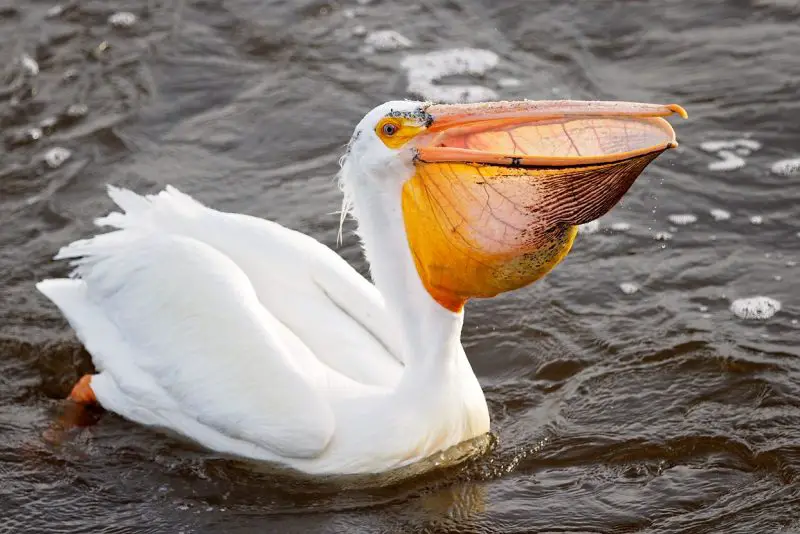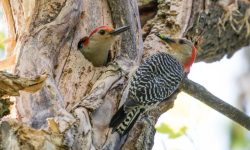Pelicans are among the most recognizable waterbirds in the world, known for their large bills and flexible throat pouches. But beyond their dramatic dives and elegant glides over lakes and coastlines lies a fascinating feeding system adapted to aquatic life. This article explores the pelican diet in detail—what they eat, how they hunt, and how their feeding habits vary by species and environment.

Core Diet – Fish as the Primary Prey
Pelicans are obligate piscivores, meaning that fish comprise the vast majority of their dietary intake across all major species. Their feeding ecology is tightly linked to the availability, size, and behavior of fish in aquatic ecosystems. Both coastal and inland pelican species exhibit strong preferences for small to medium-sized fish that are abundant and energetically profitable.
Pelicans typically target fish ranging from 5 to 30 centimeters in length, depending on their own body size, gape width, and the foraging environment. Small schooling fish—such as sardines, anchovies, and menhaden—are frequent targets in marine habitats, while freshwater populations may focus on species like carp, perch, catfish, and tilapia. These prey species are not only rich in protein and lipids but also tend to swim near the surface or in shallow areas, making them easier to capture using pelican-specific strategies.
Anatomical Adaptations for Piscivory
Central to the pelican’s feeding success is its unique bill morphology. The lower mandible supports an expandable gular pouch—an elastic membrane capable of stretching to hold over 10 liters of water and prey in large species like the American white pelican. During feeding, pelicans either dip their heads into the water while swimming or, in the case of brown pelicans, perform plunge dives from several meters above the surface.
Upon capturing fish, the pelican uses muscular contractions to drain excess water from the pouch, a process that takes several seconds. The fish are then oriented head-first and swallowed whole. This technique reduces resistance during ingestion and minimizes the risk of injury from fins or spines. Unlike birds of prey, pelicans lack strong tomial teeth or talons, so they do not dismember their prey. Their digestive system, however, is highly efficient at breaking down bones, scales, and connective tissues.
This specialized anatomy and behavioral precision make pelicans exceptionally efficient fish predators, well-adapted to exploit a wide range of aquatic ecosystems across temperate and tropical zones.
Other Prey Types – Flexibility in Diet
Although fish constitute the primary energy source for pelicans, these birds display notable dietary plasticity when environmental conditions demand it. Their opportunistic feeding behavior allows them to exploit a broader range of prey types in response to seasonal fluctuations, habitat variability, or prey scarcity.
Crustaceans and Amphibians
In estuarine, brackish, or coastal wetland ecosystems, pelicans have been documented consuming a variety of crustaceans, including shrimp, juvenile crabs, and freshwater crayfish. These prey are generally targeted during periods of reduced fish abundance, such as after storms, droughts, or seasonal spawning shifts. While crustaceans are less energy-dense than oily fish, they provide essential nutrients—such as calcium, chitin-derived compounds, and trace minerals—that may support feather development or bone metabolism, particularly during molt or chick provisioning.
Freshwater-dwelling pelican species may also incorporate amphibians into their diet, including frogs, toads, and aquatic larvae such as tadpoles. These prey are typically captured in shallow wetlands, flooded grasslands, or along riverbanks, often during the rainy season when amphibian activity peaks. Amphibians represent a soft-bodied, easily digestible protein source and are sometimes consumed in large numbers during breeding season to meet the heightened nutritional demands of incubation and chick-rearing.
Occasional Bird Predation
Though pelicans are not specialized avian predators, there are rare but notable records of them preying on small birds, particularly nestlings and fledglings of gulls, terns, or cormorants. Such incidents have been observed in both wild and captive environments and are usually associated with overcrowding, food shortages, or high intraspecific competition. While this behavior does not represent a standard dietary strategy, it highlights the pelican’s behavioral adaptability and ecological opportunism.
These alternative prey choices underscore the pelican’s capacity to adjust its foraging behavior in dynamic or stressed ecosystems. Such flexibility contributes to its wide distribution and resilience across a range of aquatic habitats.
Foraging Techniques by Species
Pelican species exhibit notable interspecific variation in foraging strategies, reflecting adaptations to habitat type, prey availability, and morphological constraints. These feeding behaviors can be broadly categorized into solitary aerial diving and cooperative surface foraging, each representing an evolutionary response to ecological pressures.
Brown Pelicans – Aerial Divers
The brown pelican (Pelecanus occidentalis) is the only pelican species to employ plunge-diving as its primary foraging technique. This behavior involves rapid aerial descents from heights of 5 to 10 meters, culminating in a headfirst plunge into the water column. Just before impact, the bird tucks its wings and angles its body to minimize injury and maximize depth penetration. The force of the dive stuns or disorients near-surface fish, which are then captured within the gular pouch during the upward ascent.
This foraging style is both visually guided and energetically demanding. Brown pelicans rely on keen binocular vision, enhanced by specialized nictitating membranes that protect the eyes on impact. Their cervical vertebrae and skull structure are reinforced to absorb repeated collisions with the water surface. Although this method requires high caloric expenditure, it is highly effective in clear coastal waters where fish shoals are visible from above. It also allows brown pelicans to forage alone, reducing intraspecific competition and enabling exploitation of patchy prey distributions.
White Pelicans – Cooperative Hunters
In contrast, American white pelicans (Pelecanus erythrorhynchos) and great white pelicans (P. onocrotalus) are non-diving species that rely on coordinated group foraging. These pelicans form linear or crescent-shaped formations in shallow lakes, marshes, or estuarine lagoons. By synchronously paddling and flapping their wings on the water’s surface, the group herds small fish into confined zones, where individuals then scoop prey with a lateral sweep of the bill.
This cooperative feeding behavior is underpinned by visual communication and social cohesion. White pelicans adjust spacing and rhythm based on water clarity, fish evasiveness, and group size. Such strategies increase capture success in turbid or vegetated environments, where individual foraging would yield lower returns. Moreover, this method reduces the energy expenditure associated with diving while allowing for high-volume prey intake per unit effort.
These contrasting foraging modalities—specialized plunge-diving in P. occidentalis and coordinated surface herding in P. erythrorhynchos—highlight the remarkable behavioral and ecological diversity within the genus Pelecanus. Each reflects a finely tuned balance between anatomical specialization and environmental optimization.
Habitat Influences on Diet
The dietary composition of pelicans is closely modulated by the ecological characteristics of the habitats they occupy. As wide-ranging waterbirds, pelicans exploit both marine and freshwater systems, with distinct prey assemblages reflecting the salinity gradient, trophic structure, and temporal variability of each environment. Habitat-driven differences in diet are further shaped by seasonal phenology and climatic conditions, which influence prey availability and energetic requirements.
Marine vs. Freshwater Ecosystems
Marine-inhabiting pelican populations—such as those along oceanic coastlines and continental shelf margins—primarily consume euryhaline, pelagic fish species. Common prey includes anchovies (Engraulidae), sardines (Clupeidae), and mackerel (Scombridae), which typically form dense schools near the surface. These species are high in lipid content, making them particularly valuable as energy-dense prey for metabolically active individuals or those undertaking long-distance migrations.
Inland or freshwater-residing pelicans, including populations in river deltas, lakes, and seasonal wetlands, target benthopelagic fish such as carp (Cyprinidae), catfish (Ictaluridae or Clariidae), perch (Percidae), and tilapia (Cichlidae). These prey species are often more dispersed and may require greater foraging effort per unit of biomass consumed. Freshwater habitats also present pelicans with opportunities to consume amphibians, crustaceans, and occasionally aquatic insects, particularly in highly productive or eutrophic systems.
In estuarine and brackish transitional zones, pelicans display intermediate dietary profiles. These habitats support a diverse mix of prey types due to fluctuating salinity and rich nutrient input, enabling consumption of both marine-origin fish and freshwater-associated taxa like frogs, shrimp, and juvenile crabs. Pelicans foraging in such zones exhibit heightened flexibility and may shift between prey types based on tidal cycles or seasonal hydrology.
Seasonal Variation
Pelican dietary demands fluctuate significantly with life history stages, particularly during reproduction and migration. During the breeding season, adults require elevated levels of protein, calcium, and energy to sustain courtship displays, egg production, and parental care. This results in intensified foraging activity, extended daily ranges, and occasionally a broader prey spectrum to meet nutritional thresholds. Some individuals or colonies may exhibit prey-switching behavior, consuming less typical items such as amphibians or invertebrates when fish availability is low.
Conversely, in non-breeding seasons or during periods of environmental stress (e.g., drought, ice cover), pelicans may undertake regional or transcontinental movements in search of productive foraging sites. This includes following fish migrations, aggregating in thermal refugia, or shifting habitat entirely. In colder climates, access to open water becomes a limiting factor, and pelicans often concentrate around warm-water discharges, estuarine outlets, or aquaculture facilities.
Altogether, the interaction between habitat type and seasonal dynamics shapes not only what pelicans eat but how they forage and where they are found throughout the year. This ecological responsiveness underscores their role as both predators and indicators within aquatic food webs.
Digestion and Energy Use
Pelicans possess a highly specialized digestive system optimized for the rapid and efficient processing of whole prey, particularly fish. Their feeding anatomy and gastrointestinal physiology are finely tuned to support the energetic demands of large body mass, flight, and breeding.
Ingestion Without Mastication
Pelicans lack the beak morphology and cranial musculature necessary for tearing or masticating prey. Once a fish is captured and water is expelled from the gular pouch through muscular contractions, the bird reorients the prey headfirst and swallows it whole. This alignment minimizes resistance as the prey travels down the esophagus and also reduces the likelihood of injury from fin spines or scales.
The esophageal lining in pelicans is expandable and coated with mucus to facilitate the smooth passage of relatively large prey items. Once in the stomach, the prey enters the proventriculus (glandular stomach), where it is subjected to enzymatic digestion. Gastric secretions contain highly concentrated hydrochloric acid and pepsin, enabling pelicans to dissolve tough biological materials such as fish bones, scales, and chitinous exoskeletons. Mechanical breakdown continues in the ventriculus (gizzard), though less so than in granivorous birds, as pelicans typically do not ingest grit for grinding.
Indigestible material—such as large bones, undigested fish scales, or crustacean shells—is compacted into a pellet and later regurgitated, similar to the behavior observed in raptors and herons. This pellet formation process serves to protect the intestinal tract from abrasive materials while also providing researchers with valuable insight into diet composition through pellet analysis.
Caloric Intake and Energetic Demands
Daily energy requirements in pelicans are substantial, with an average adult consuming approximately 1 to 1.5 kilograms of fish per day. This intake fluctuates based on species, body size, ambient temperature, metabolic rate, and life stage. For example, American white pelicans—among the largest of the genus—may require higher caloric intake during breeding season or migration. Juveniles, especially during early post-fledging development, necessitate more frequent feeding due to rapid tissue growth and thermoregulatory inefficiency.
Oily fish such as sardines, anchovies, and mackerel provide high concentrations of calories per gram, making them particularly valuable as fuel for migratory flights or during energetically expensive behaviors like plunge-diving or long-distance commuting between nesting sites and foraging areas. Lipids within these fish are readily metabolized and stored in subcutaneous fat, which pelicans can mobilize during periods of food scarcity.
Altogether, the pelican’s digestive system reflects a trade-off between speed, volume, and selectivity—favoring high-throughput processing of energy-rich prey to meet the demands of a large, mobile avian predator.
Conservation Implications
The dietary ecology of pelicans serves as a powerful bioindicator of aquatic ecosystem integrity. Because pelicans are apex foragers that rely heavily on accessible, high-quality fish populations, fluctuations in their feeding behavior and reproductive success often reflect broader ecological imbalances. Consequently, understanding their trophic dependencies has direct relevance for conservation biology, fisheries management, and wetland protection.
Pelican populations are particularly sensitive to anthropogenic stressors that impact fish abundance and water quality. Overfishing—especially of small pelagic species like anchovies and sardines—can significantly reduce prey availability during critical life stages such as migration and breeding. Such prey depletion may lead to reduced adult body condition, increased foraging range and effort, and ultimately lower reproductive output. In colonial nesting species like the American white pelican or great white pelican, a decline in fish stocks can result in widespread chick mortality due to starvation or parental abandonment.
Additionally, habitat degradation—including wetland drainage, dam construction, and shoreline development—alters prey distributions and reduces suitable foraging grounds. Pollution, particularly from agricultural runoff and heavy metals, can accumulate in the tissues of aquatic organisms and be transferred to pelicans through biomagnification. This poses chronic health risks such as reproductive failure, immune suppression, or developmental deformities in chicks. Oil spills in coastal regions pose an acute hazard to diving species like the brown pelican by compromising feather waterproofing, thermoregulation, and foraging efficiency.
Monitoring pelican diet through pellet analysis, behavioral observation, or stable isotope profiling provides researchers with early-warning indicators of ecosystem decline. Shifts in prey composition, increased consumption of suboptimal food sources, or relocation of foraging areas can all signal deteriorating environmental conditions.
Protecting pelican populations thus requires integrated conservation strategies that address both direct threats to the birds and broader threats to aquatic food webs. Sustainable fisheries policies, the preservation of key foraging and nesting habitats, and pollution control are all essential components in ensuring the long-term survival of pelican species across their global range.
Conclusion
The pelican’s diet—rooted in fish but supplemented with crustaceans, amphibians, and occasionally other prey—reveals the ecological importance of healthy aquatic systems. Whether diving from the sky or skimming across a lake, these iconic birds demonstrate a remarkable blend of anatomical precision and environmental adaptation. By studying what pelicans eat, we gain insight not only into their biology but also into the balance of the ecosystems they inhabit.






